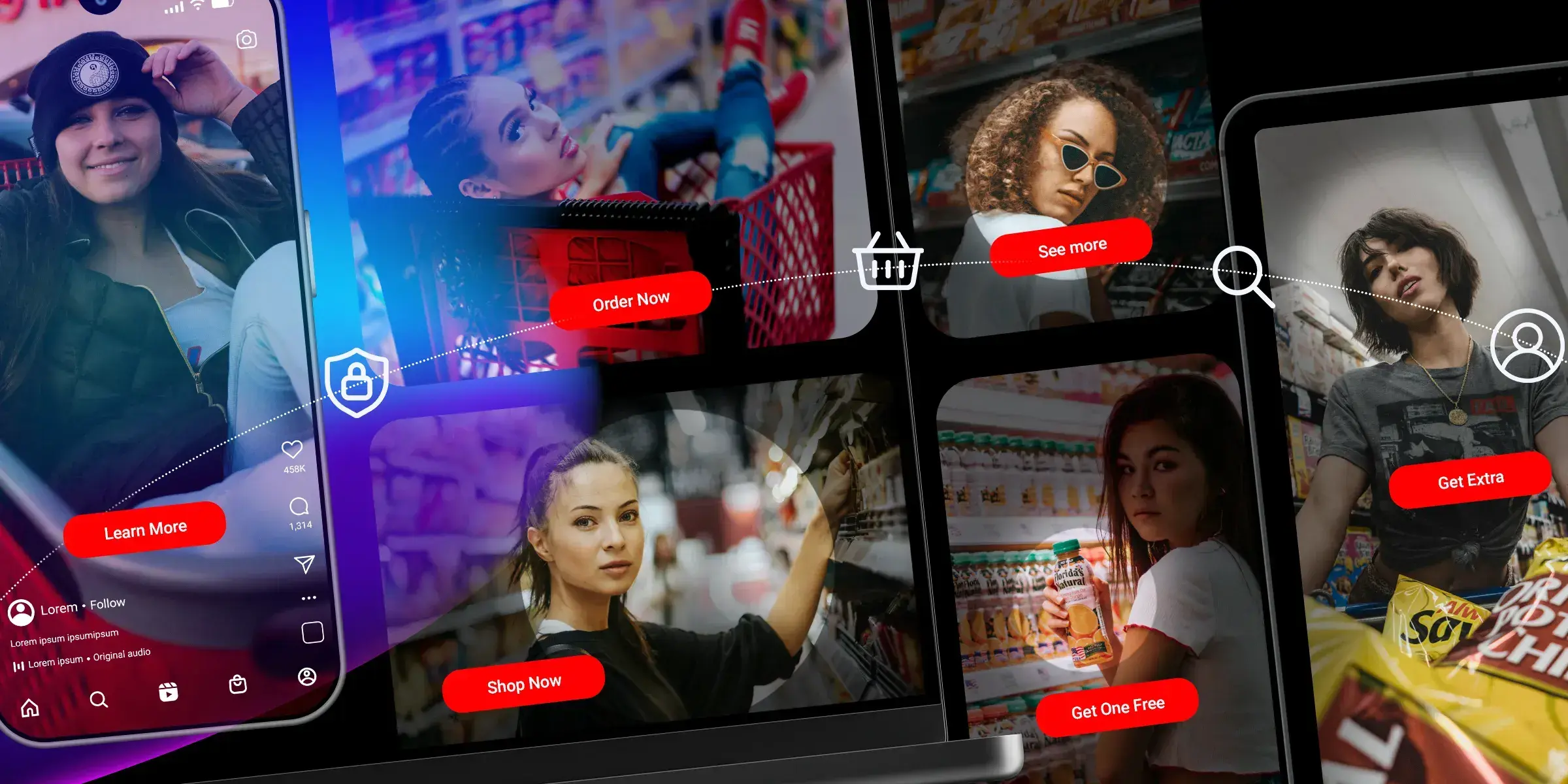Personalization at scale is currently one of the most widely used marketing strategies, and for a good reason. Not only does it help your brand resonate with wider audiences, it creates a customized, more personal customer experience. It can help you raise your ROI, lower your CAC, and increase brand loyalty.
But every strategy comes with its set of challenges. While building yours, there are some important pitfalls to watch out for. In this post, you’re going to learn about the most common challenges companies face when adopting personalization at scale. You will also get some solution points to get you started with streamlining your personalization marketing strategy.
The Challenges of Personalization at Scale and How to Tackle Them
While personalization at scale is one of the most helpful things you can incorporate into your marketing strategies, companies seem to still face some challenges. Luckily, these problems revolve around specific common issues. Here are the most important challenges you might face while deploying personalization at scale and their solutions:
Data Challenges
Data is your number one component for creating personalized digital experiences. So, it’s extremely important to have clear, accurate, and up-to-date data. Some of the most important challenges companies face revolve around data. In fact, according to Forrester, 53% of B2C marketing decision-makers say it’s difficult to 'update their data strategy to adapt to data deprecation'. There are relatively simple issues - having large volumes of data, for example, can be overwhelming. But by aligning your goals to your personalization strategy, you can identify the kinds of data you really need, and focus on those segments.
But what happens if you don’t have a correct data-storing process in place? Data fragmentation is a serious challenge. It happens when data is not gathered and stored in one specific location. When your data is scattered across different locations, you lose the ability to properly access all the information you need. You might be losing important information, or not seeing the big picture. Your personalization tactics become less effective, and you don’t hit your target ROI.
Organize Your Data Infrastructure
Make sure you don’t have multiple systems in place collecting data. Run an audit to pinpoint all places where data might be collected and stored, and decide on which systems should remain in place. Make sure you don’t have any duplicates in place.
Look into utilizing a single collection and storage platform. If you’re not already using cloud services, it is worth considering cloud-based solutions. Data lakes and data warehouses are also solutions that will help you store data in one place.
Delete Duplicates
Deleting duplicate sets of data is not a one-time thing. You need to regularly look into your data and remove any duplicates to avoid data fragmentation.
Enforce Data Governance Policies
Put company-wide policies in place and encourage following best practices around the collection and storage of data. Data governance policies help align all your staff, enhance data security, and prevent any new data silos from forming.
Implement Data Quality Monitoring
Continuous data quality monitoring will help you solve any data quality issues your company might be facing. This is a very important step toward ensuring you base your personalization strategy on high-quality data. Here are some best practices on data quality monitoring to get you started:
- Establish data quality metrics
- Use data quality tools
- Automate data quality processes
- Run regular data audits
- Establish data stewardship
Encourage Collaboration and Communication
You could have the best data policies in place. But if your employees aren’t aware of them, they’re as good as nonexistent. Foster communication among your staff to make sure everyone is not only aware, but trained on the data policies you have in place.
Address Security and Privacy Concerns
Remember that security is always a factor where data is involved. Create security policies, like deploying a zero trust model, to ensure your data is safe.
Segmentation Challenges
Audience segmentation is vital for a successful personalization strategy. This is a stage where teams often face challenges. The most common one is the issue of overlapping segments: you will often find that parts of your audience belong to more than one segment. So, how can you make sure that your segmentation is as accurate as possible?
When it comes to accurate segmentation, prioritization is key. Revisit your goals and prioritize them according to their significance. Assign your audience to the segments that are most important to you in order to achieve your high-priority goals. Customer Engagement Platforms with integrated segmentation tools can also help you overcome this challenge.
Content Scalability
Personalization at scale needs a large amount of content, tailored to your different segments. Your teams will need to create large content variations and stay on top of managing all that content. This can be time-consuming and might require a lot of resources.
A good tactic that will help you reduce content resources is to repurpose already existing content. Content collaboration can also increase your content output without putting a toll on your resources. Do a thorough research into content creation and content management tools and decide on the most suitable one for your teams. The right content creation tools can drastically reduce content creation time and free up significant time for your content teams.
User Privacy
Data collection is one of the most important parts of setting up your personalization strategy. But it comes with a great headache: data protection. While your audience demands personalized experiences, they’re still, understandably, concerned about the amount and type of data companies store. You also need to take into account the data protection policies that have been in place for years. Balancing your audience’s desire for personalization with their data privacy concerns can be tricky.
The most important thing to do is stay compliant with all privacy legislation that applies to your company. This protects you and your customers, but also builds trust with your audience by proving that your customers’ data privacy is important to you.
Incorporate data privacy features early in your project. This recommended practice, known also as Data Protection by Design, will help you better ensure your customers’ data privacy, minimizing the occurrence of potential privacy issues in the future. Data Protection by Design has already been incorporated into GDPR, but it is a great practice to adopt even if GDPR doesn’t apply to your company.
Another good practice to consider is data minimization: plan to collect, process and store only the data that is needed for the specific campaign you’re planning to run. This enhances your customers’ data privacy. It also means less irrelevant data for you to process and store.
Measuring ROI
How do you measure the effectiveness of your personalization campaign? This is one of the most asked questions when deploying a personalization campaign. There are KPIs that can help with specific goals, like conversion rates. But it ultimately depends on your campaign goals, and some are more difficult to measure than others. If your goal is to build long-lasting relationships with customers, for example, or measure customer trust, you might find it more difficult to pinpoint the right KPIs.
A good approach to solving this issue is to remember to use both quantitative and qualitative metrics. For goals that don’t have specific, quantifiable KPIs tied to them, use A/B testing to test a personalized campaign against a non-personalized one. This will help you understand the impact of your personalization efforts.
Technological Restrictions
Your personalization strategy needs your systems to work effectively together, which means they need to be seamlessly connected. But that’s not always the case. When your systems don’t work together, you can’t create an effective personalized experience. Disconnected systems lead to data fragmentation, and customer profiles being more difficult to create.
Look into utilizing a Customer Data Platform (CDP). Customer Data Platforms collect all customer data in one place and create a unified customer profile. CDPs provide immediate access to consolidated data, helping you deploy real-time personalization more easily.
Next Steps
Personalization at scale is not just a good strategy - it’s an important part of building customer relationships, increasing customer loyalty, lowering your Customer Acquisition Cost, and increasing your ROI. As with any strategy, the beginning might feel daunting. But you shouldn’t let that stop you from trying. Align your personalization strategy with your goals, follow best practices, and tackle the challenges you might face using the tips you found in this post.
Personalization strategies can help your brand grow significantly, and they are worth the effort. Dive deeper into personalized advertising with this article, which answers the most popular questions on personalized ads.
Want more insights into developing or refining your personalization marketing strategy? Sign up for Bannerflow’s monthly newsletter today.








